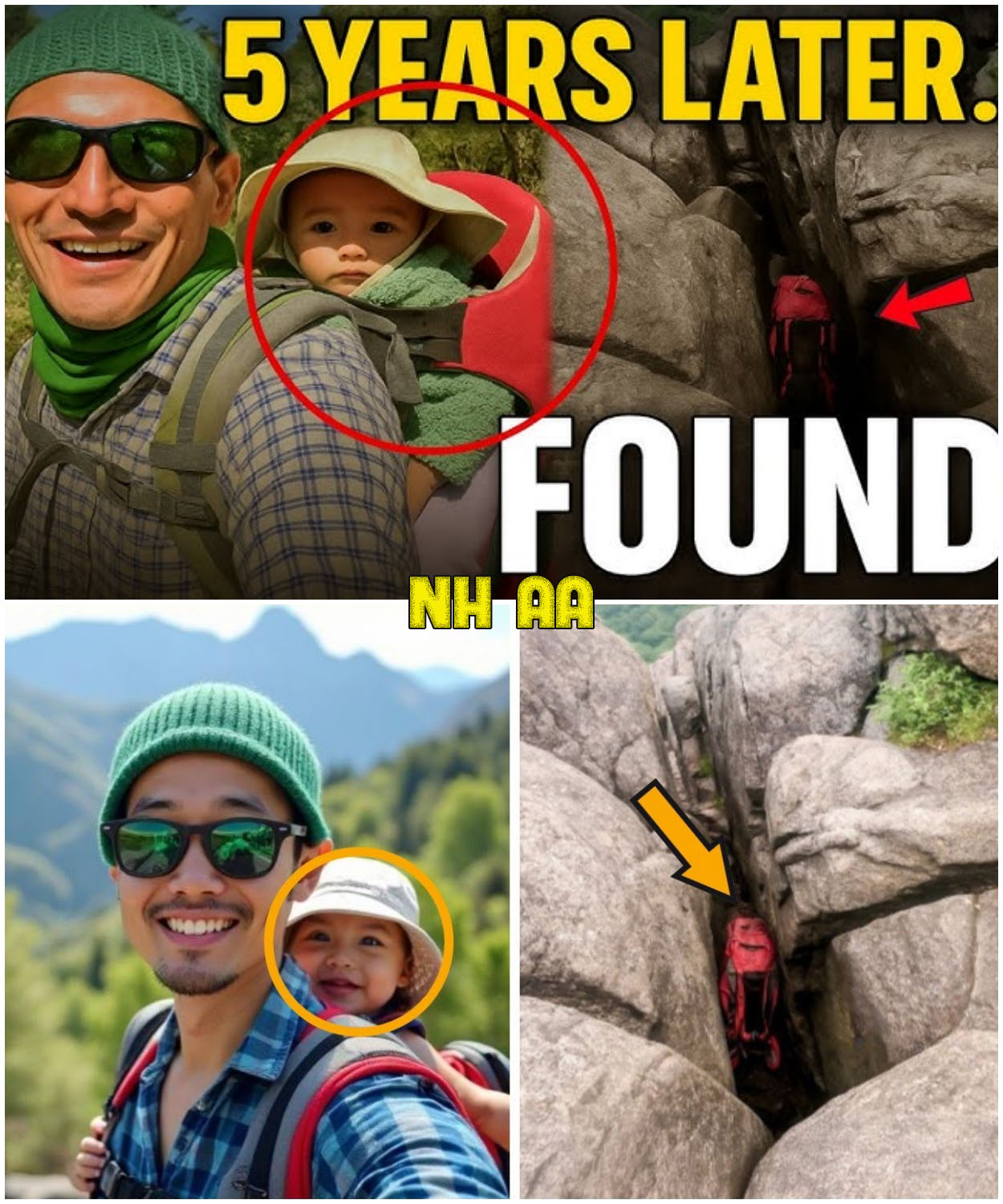The Great Smoky Mountains have long been a place of wonder and mystery, a stretch of wilderness where millions hike every year but where only a rare few disappear completely without explanation. That is why the 2018 disappearance of Kaido Tanaka, a seasoned survivalist and devoted father, along with his 14-month-old daughter Luna, became one of the most haunting stories in the park’s history.

Kaido was not the type to get lost—he was known for his meticulous preparation, the kind of man who carried three fire starters for a short day hike and read the forest as easily as most people read a newspaper. On the morning of October 5, 2018, he set out from a small hotel on the North Carolina border with baby Luna strapped into a high-end red carrier, sending his wife Akari a cheerful selfie at 10:32 a.m. In the picture, he wore his trademark green beanie, Luna peeked from the carrier, and both were framed by brilliant autumn foliage. “The mountains are showing off today. Love you,” he wrote.
That message would be the last time Akari ever heard from her husband and daughter. By evening, dread overcame her. When they failed to return by 9 p.m., she called the park rangers, launching one of the largest search efforts in the Smokies’ history. For a week, helicopters scoured the skies, ground teams swept ravines and creeks, and volunteers fanned out across miles of forest. Nothing surfaced—not a footprint, not a piece of gear, not even a stray diaper.
The only clue came on day six: a cracked brass compass found in the mud. Hopes rose briefly until experts dated it to the early 20th century, dismissing it as unrelated. With no evidence, theories grew. Online forums began to suggest Kaido had staged his own disappearance. “He knew those woods too well to get lost,” skeptics argued. “Maybe he wanted to vanish.” Akari, devastated and isolated, battled not just grief but suspicion, her family turned into a mystery that fueled speculation rather than sympathy. For five years, the Smokies kept their silence. The Tanakas became part of Appalachian folklore, a cautionary tale whispered on trails and around campfires.
Yet Akari refused to let go. She hired private investigators, retraced paths, and returned to the mountains again and again, clinging to the hope that somewhere, evidence still existed. Then, on August 1, 2023, two geology students, Ben Carter and Sarah Jenkins, studying erosion far off the trails, spotted something unusual deep in a fissure of rock: a flash of red. After hours of climbing, they pulled free a battered but intact red baby carrier. They didn’t realize it, but they had just cracked open a five-year-old cold case. At the ranger station, veteran ranger Valerius Ash recognized it immediately—it was the same carrier from Kaido’s last photo.
Sent to a forensic lab, the carrier revealed a startling truth. Despite being found outdoors, the fabric was only lightly faded, the foam dry and intact. UV tests showed it had been exposed to sunlight for months, not years. There was no mold, no rot. The conclusion was clear: the carrier had been stored somewhere sheltered until recently, likely displaced by the record floods that had hit the region months earlier. Hydrologists traced the flood paths back to Widow’s Grief Basin, a remote and nearly untouched drainage area overlooked during the original search. A new team assembled, including climbing specialists and wilderness medics, and after grueling days of pushing through dense brush, they discovered a rock shelter hidden by rhododendron.
Inside lay skeletal remains, later confirmed as Kaido’s through dental records. His bones showed catastrophic leg and pelvic fractures, injuries consistent with a fatal fall. He had not staged an escape; he had died there, unable to move. But the search revealed more. Near the entrance, investigators found a hand-forged digging tool wrapped in green electrical tape, an unmistakable marker of local ginseng poachers who roamed the Smokies illegally. Suddenly the tragedy had a new dimension—Kaido had not been alone. Investigators followed the clue to Quentyn and Isela Mayfair, a couple long suspected of poaching.
Records showed they had left Tennessee in 2019, moving through West Virginia before settling in Kentucky. Neighbors recalled a little girl living with them, quiet and dark-haired, about six years old. The possibility that Luna had survived electrified the case. When investigators confronted the Mayfairs at their Kentucky home, they brought no warrant, only the incriminating tool. Upon seeing it, Isela broke down and confessed. She and her husband had found Kaido badly injured but alive in Widow’s Grief Basin. Beside him was Luna, unharmed. Kaido had begged them to save his daughter. Afraid of being arrested for poaching, they fled with the baby, leaving Kaido behind with water but no real chance of survival. They raised Luna as their own, never telling her the truth.
DNA tests confirmed it. Luna Tanaka was alive. For Akari, the news was both a miracle and a heartbreak. She had lost her husband, but after years of agony, she was reunited with her daughter, who now faced the difficult journey of reconnecting with a family she had no memory of. The case of Kaido and Luna Tanaka has since become one of the Smokies’ most extraordinary stories, a mix of tragedy, devotion, and the unexpected ways secrets eventually surface. It is a reminder that the wilderness holds mysteries beyond imagination and that sometimes all it takes is a flash of color in a forgotten crevice to bring the truth back to light.





